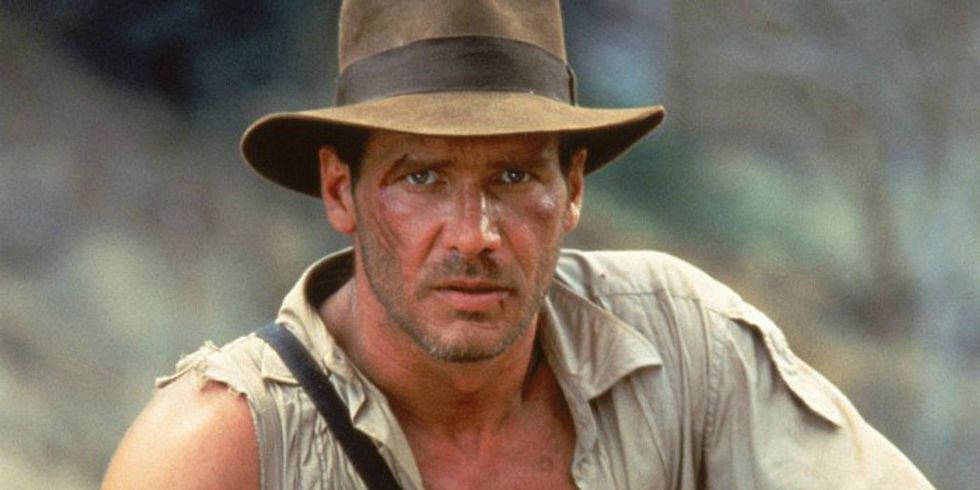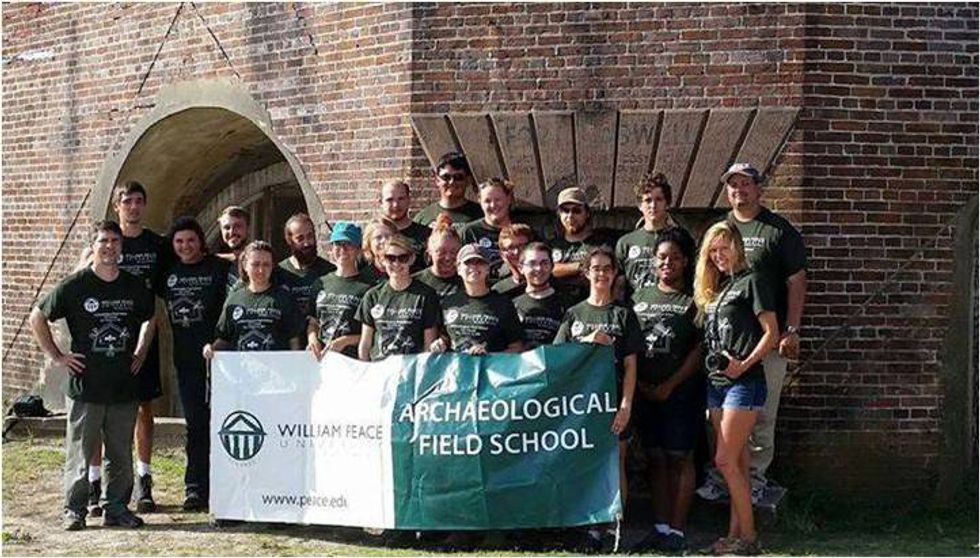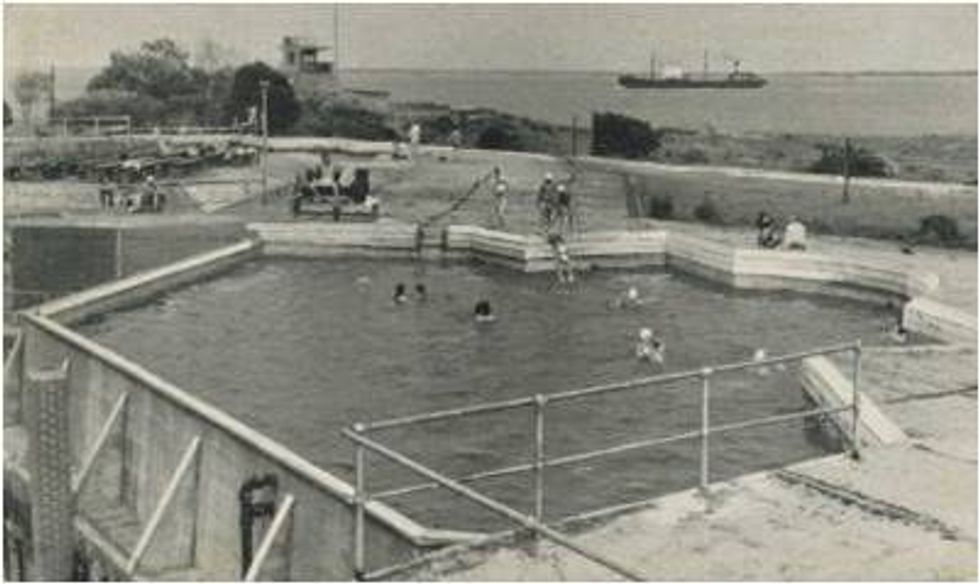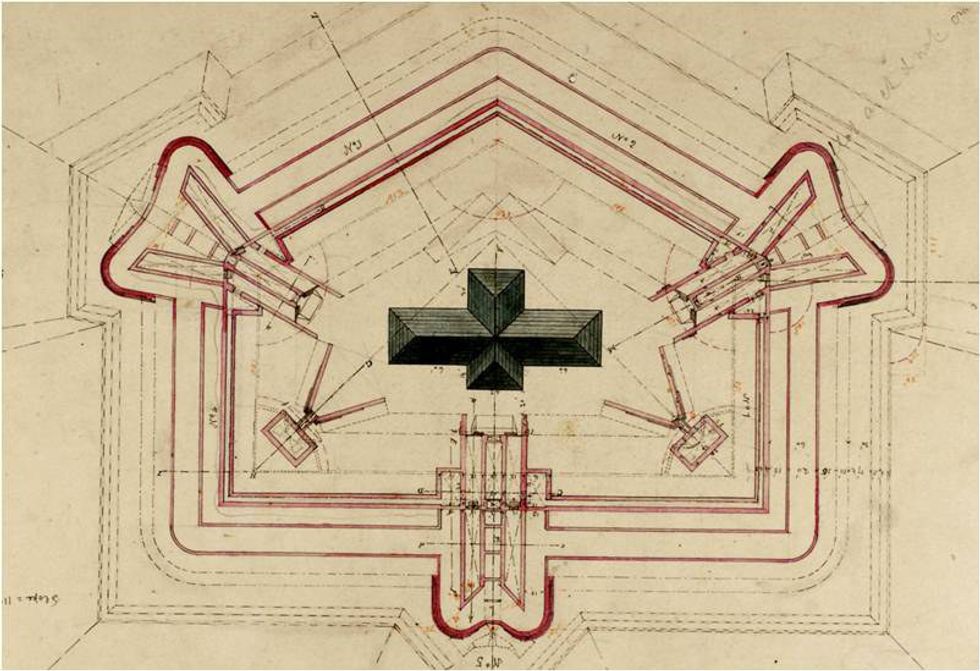This is going to be a two-part article, since there is just so much information to cover about this trip. This week I want to go over some of the history behind Fort Caswell and the reason I was there. Next week I will cover my own personal experience on why this was so significant to me.
In the summer of 2015, I took part in a trip that changed how I looked at the world. It was four weeks of hard work, moderate drinking and bonding with peers who will forever be my friends. From May 19 to June 14, 2015, I was a member of the William Peace Archaeological Field School at Fort Caswell, Oak Island, N.C.
Fewer Nazis and snakes, but a lot more archaeology than Dr. Jones ever did.
The trip was a class that was offered as a partnership between William Peace University, The Coe Foundation, The North Carolina Baptist Association (who owned the property), and Wake Technical Community College (where I was a student). We were directed by Thomas Beaman of Wake Tech and Dr. Vincent Melomo from Peace.
For the sake of this article I will call them Tom and Vinnie. Both are amazing archaeologists and anthropologists, respectively, and whom I consider great mentors. With 17 other students, we set out to uncover the secrets that Fort Caswell had to offer.
We just so happened to be wearing dark green on the hottest and brightest day out there.
So Fort Caswell is situated at the mouth of the Cape Fear River about 30 miles south of Wilmington, N.C. It was built in order to defend the mouth of the river so that ships could not attack the port city to the north and then attack further inland. It was commissioned by President James Monroe in what will be known as the Third System of Fortification following the coastal defeats in the War of 1812. Later during the Civil War, the fort was controlled by the Confederates until 1865 when it was abandoned and the powder magazines ignited. It served as a U-boat listening post during both World Wars and as a resort before being bought by the North Carolina Baptist Assembly in the 1950s.
This swimming pool was actually a gun emplacement during WWI!
So why were we digging there? Well, Caswell had some interesting features that we were trying to uncover. It had a two-story brick Citadel that stood in the middle of the parade ground. This was unique for Third System forts because the architect who designed Caswell was French and based his design off of medieval fortresses. That building had been torn down when part of the fort was redesigned into a gun battery before the Spanish-American War. The fort also had two moats, one wet and one dry, that encircled it in order to provide defense from any land-based sieges.
Too bad no major battle took place here.
What was the focus of our field school? We went there with a series of objectives and research goals.
1. Assess any archaeological potential
2. Contribute to National Register of Historic Places nomination
3. Recover any interpretive information about the fort.
4. Contribute to the Civil War and WWI commemorations about the fort.
And for research we wanted:
1. To define and document the Citadel
2. To define and document the wet and dry moats
3. To locate and define a possible plumbing system
4. To explore the material life of the soldiers
Thank you for sticking with me through the admittedly drier aspects of this information. Next week I'll go into further detail about the work and my experience of archaeology. It'll involve pirate bars, losing my toenails and eating so many sandwiches that I can't look at them the same way anymore.
I suppose I'll also have to get around to the interesting aspects of the dig, like finding artifacts, fending off Baptist children and learning just how awe-inspiring it is to be the first person to touch certain pieces of history for the first time in 150 years.

























